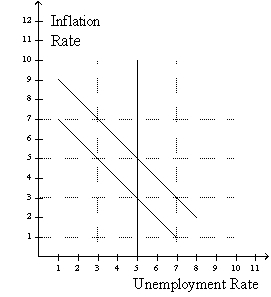Figure 22-7
Use this graph to answer the questions below. 
-Refer to figure 22-7. If the economy starts at 5% unemployment and 5% inflation then if the Federal Reserve pursues a contractionary monetary policy, in the short run the economy moves to
Definitions:
Required Return
represents the minimum percentage profit incumbent upon an investment to be considered worthwhile by an investor, factoring in risks associated.
Return
The income generated from an investment, expressed as a percentage of the original investment cost.
Discounted Payback
A payback period calculation that takes into account the time value of money by discounting each of the cash flows from the project at a particular rate before it sums them to determine the break-even point.
Payback Period
The time required for the return on an investment to "pay back" the sum of the original investment, commonly used as a measure of investment risk.
Q9: Suppose the MPC is 0.60. Assume there
Q16: An economist would be more likely to
Q109: Closely watched indicators such as the inflation
Q135: Describe the process in the money market
Q216: Which of the following events would shift
Q297: Initially, the economy is in long-run equilibrium.
Q361: The multiplier for changes in government spending
Q375: Refer to Figure 21-2. A decrease in
Q383: A.W. Phillips's discovery of a particular relationship
Q411: Refer to Figure 21-2. Assume the money